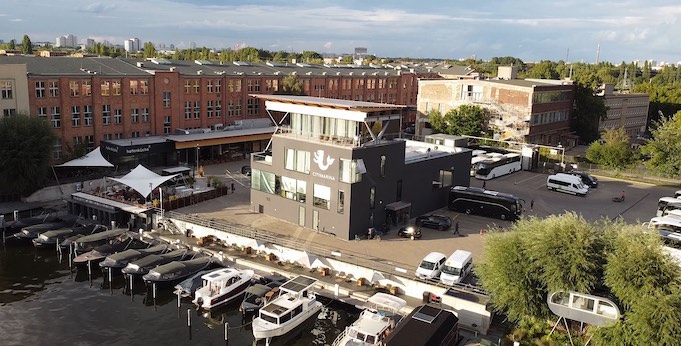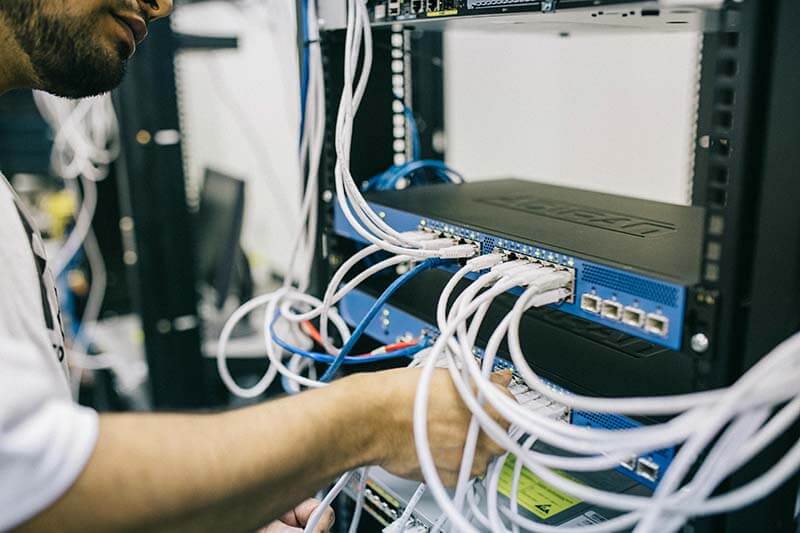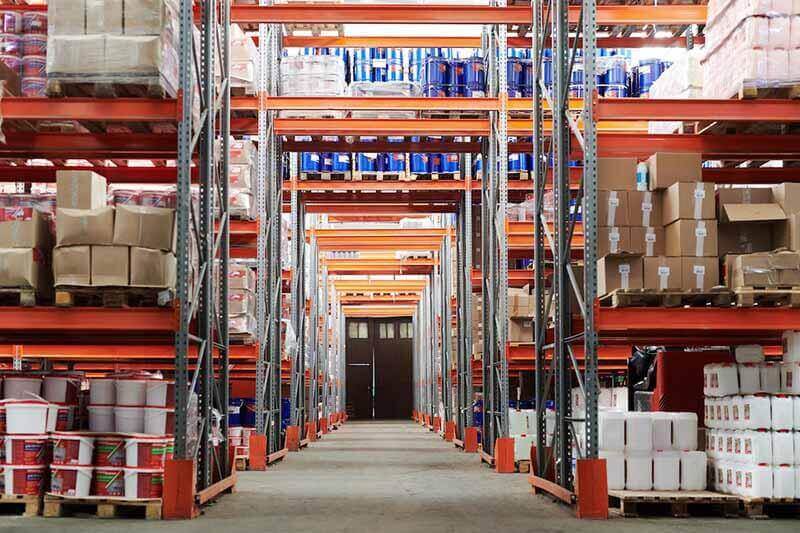
- Software improves contract management by making it more efficient and organized.
- You can easily integrate contract management with other tasks, simplifying workflows.
- The key to success is embedding the software into your processes in a way that fits your needs. There’s no one-size-fits-all solution.
- What Is Contract Management?
- The Key Stages of Contract Management
- What Makes Contract Management Work Well?
- The Different Approaches to Contract Management
- Possible Software Solutions for Contract Management
- Ticketing System Ensures Transparency
- What Forms of Electronic Signature Are There?
- Software-As-A-Service: Reliability and Security Are Key
- Avoid Interface Problems: The Advantage of Integrated Solutions
- FAQs about Effective Contract Management
What Is Contract Management?
Contract management is all about handling contracts efficiently, from creation to execution and beyond. Almost every business has activities that depend on written agreements, making contracts an essential function. Here are some examples of common contracts:
- Purchase contracts in procurement
- Employment contracts in HR
- Rental agreements in facility management
- Maintenance contracts in production
- Supply contracts in sales
In the past, contracts were typically handled and stored in paper form, but in the digital world we now live in, things have changed. Moving to a digital system is now key to ensuring contracts are stored in a legally compliant way.
Today, various software solutions are available to manage contracts. Some systems only save scanned documents on a network drive, while specialized contract management software can give you many extra features.
If you are thinking about purchasing a contract management software for your business, it’s important to first ask yourself a few key questions:
- Will multiple people need access to the contract?
- Are there legal regulations that must be followed?
- Is ongoing, permanent access required?
- Is remote access from different locations necessary?
- Are there any special legal requirements or privacy concerns?
- Do the contracts contain sensitive or confidential information?
Ideally, a single software solution should be used to manage all contracts, ensuring consistent access and information across your organization. This also saves your team time switching between softwares and can prevent errors in transferring data.
The Key Stages of Contract Management
Managing contracts involves several stages. But every contract is different so not every step is required for every contract type.
Here is a rough idea of the key stages you can expect to go through in contract management:
1. Drafting and Review: Contracts are created and reviewed by specialists, often with input from legal teams. It’s common to send draft versions to contractual partners for feedback and adjustments at this stage.
2. Secure Signing: Contracts aren’t valid until signed by all parties. Depending on the type of contract, this can involve different methods. For paper contracts that are later digitized, a scanned signature is often sufficient. For digital contracts, legally binding e-signature solutions can be used, which we’ll explore in detail later.
3. Delivery: Once finalized, the contract must be shared with both parties. This can be done through various channels such as email, secure data rooms, or other digital methods.
4. Storage: Contracts need to be stored securely, but also in a way that makes them easy to find and access when needed. Good organization and accessibility are key here .
5. Archiving: Business contracts come with legal retention requirements, meaning they must be archived for a set number of years after the transaction is complete. For example, in the UK Section 5 of the Limitation Act 1980 states that legal action must be brought within six years of the contract arising. Businesses, then, have a responsibility to keep these documents for at least six years after they expire so they can refer to them if there’s a disagreement. This makes a total of 12 years that the record should be stored securely.
6. Monitoring and Compliance: Contracts are a crucial part of day-to-day operations. They must be searchable and accessible for ongoing tasks like compliance and controlling. Deadlines, renewal dates, and terms need to stay front and center to avoid any issues down the road.

What Makes Contract Management Work Well?
Effective contract management relies on several key factors that ensure:
- Legal compliance
- Ease of use
- Accessibility
- Security
- Automation
- Efficient communication
Let’s break down each of these:
Legal Compliance
Many different laws impact how contracts must be processed and stored.
For example, health and safety laws require businesses to maintain accurate records of safety-related maintenance. Additionally, laws such as the Companies Act 2006 and the UK Data Protection Act 2018 (which incorporates GDPR) set specific standards for contract storage and processing.
For digital contract management, the HMRC’s Making Tax Digital (MTD) regulations govern the electronic storage and processing of financial records, ensuring that bookkeeping principles are followed.
Key areas of note include:
- Traceability and verifiability
- Completeness and accuracy
- Timely recording
- Order and immutability
Data security is another important factor. In the UK, the Data Protection Act 2018 ensures that contracts containing personal data are handled with care, requiring strict security measures for digital storage and access.
Ease of Use
Contract management software should be user-friendly. Errors can have serious consequences, and since employees have varying levels of training and may not use the system frequently, the software should be intuitive. A clear structure and logical filing system can help reduce mistakes and cut down on the need for ongoing, costly training.
Accessibility
A centralized storage solution allows multiple people to access contracts when they need to. Local storage is rarely practical for contract management. Instead, network drives or specialized software with centralized databases should be used.
These options also raise the question of using cloud-based applications, which allow employees to access contracts while working remotely. VPNs (virtual private networks) are another option for secure access from different locations.
Security
Automation
Automation can make contract management a lot more efficient. Software can:
- Automatically send reminders for contract deadlines
- Generate reports
- Create regular status updates for relevant parties
Ticketing systems are another useful tool, streamlining collaboration between departments and making task statuses visible at all times.
Communication
Good communication is essential for contract management. It can be helpful to integrate communication directly into your management system, keeping a clear record of inquiries and responses. Ticketing systems can help with this by ensuring all employees are on the same page and have access to the latest information.
Documentation
The Different Approaches to Contract Management
Here are some of the most common approaches:
1. Thematic Organization
Thematic organization is particularly useful in sectors where subject-matter expertise is crucial such as healthcare or construction. However, a potential downside is that finding information can be difficult, especially in large organizations where multiple departments handle different contracts.
2. Work Area Classification
The main benefit here is that contract information is readily available exactly where it’s needed. Employees in each department can quickly locate and manage the contracts that are relevant to their tasks, leading to more streamlined processes and fewer delays.
The downside of this approach is the lack of a central overview, which can be problematic for managers needing to track contracts across multiple departments.
3. Object-Oriented Approach
For example, in an inventory management system like Timly’s digital device file, contracts are stored within the profile of each specific object. This makes it easy to locate relevant documents without having to sift through unrelated information.
This system ensures a blend of centralized access and specialized oversight, offering a balance of efficiency and security. However, the drawback is that it may require more sophisticated software solutions to organize and manage contracts effectively within this framework.
Possible Software Solutions for Contract Management
1. Existing Filing Systems
2. Specialized Contract Management Software
For organizations with more complex contract management needs, specialized software can give you a more complete option. These platforms are designed with contract management in mind, offering features like:
- Document Tracking
- Version Control
- Automated Reminders for Contract Renewals
- Deadlines
Digital Data Rooms
Comprehensive Software Solutions:
All-in-one programs integrate multiple functionalities beyond contract management. An example is Timly’s inventory management software, which allows users to record all inventory items and link documents spatially by item, room, or building.
This solution includes a digital device file for each asset, automated deadline management, and an integrated ticketing system to manage tasks. Additionally, the platform includes personnel management, allowing documents like employment contracts and training certificates to be stored within digital personnel files.
The Timly Software in Use

Optimized Device Management With Innovative Self-Inventory
SodaStream is the world market leader for water sparkling systems for domestic use and has a lot of IT equipment at its various locations. Many colleagues now work from their home offices. A digital solution for the efficient management of IT end devices became necessary...

Panasonic x Timly: Driving Technological Innovation
One of the most remarkable aspects of human ingenuity is our ability to innovate. Innovation is embedded in the DNA of consumer electronics giant Panasonic, which has diversified into a number of sectors, from heavy industry to construction...

Manage Video Equipment Efficiently Without Much Effort
The Hamburg media company always does outstanding journalistic work and is characterized by independent reporting. In order to maintain journalistic quality, the teams work with highly specialized devices – these need to be managed efficiently...

Smart City Asset Management – Timly in Use at DIGOOH
The core business of DIGOOH Media GmbH in Cologne is to manage digital city light posters (DCLP) for outdoor use in various cities in Germany. The challenge here lies in making the client’s communication message always available at the right time, in the right place...
(No credit card required)
Ticketing System Ensures Transparency
A ticketing system simplifies communication and keeps everything organized. Each ticket remains linked to its relevant contract or object, ensuring accountability and traceability. When an order is created, it connects directly to the associated contract, with both the order and its status documented. Authorized users can then view and update information as needed.
Deadlines are also easier to track within tickets, and automated reminders help prevent missed deadlines by sending alerts as they approach. This structure ensures that no tasks are forgotten about, simplifies monitoring, and creates more transparency. Once a task is completed, the system verifies that all related tickets are closed, providing a clear overview of the entire process.
What Forms of Electronic Signature Are There?
Signatures are an essential part of any contract, and digital contract management requires electronic signatures.
These come in several forms:
- Simple, Digitized Signature: This includes scanned signatures or signatories made with a digital pen on a compatible device. While convenient, this form has the lowest level of security as it can be more easily falsified.
- Certificate-Based Signature: This type uses digital certificates based on cryptographic functions, creating a unique, unforgeable character string. These signatures can be verified for authenticity by the issuing authority, making them more secure.
- Qualified Electronic Signature: Issued only by government-certified bodies, this form of signature provides the highest level of security and legal standing. Processing typically requires approved devices, such as chip card readers, and may soon include options like the electronic ID card.

Software-As-A-Service: Reliability and Security Are Key
The latest development is Software-as-a-Service (SaaS), where the software runs entirely online. With SaaS, users log in through a web app, eliminating the need for on-site infrastructure. All that’s needed is an internet connection, making it easy to work from any location.
However, SaaS does require strict security measures to ensure data safety. Key requirements include data encryption, robust access controls, and GDPR-compliant servers. Many established providers offer these security assurances, making SaaS a reliable choice that simplifies electronic contract management.
Avoid Interface Problems: The Advantage of Integrated Solutions
Additionally, using multiple systems demands more hardware, making troubleshooting more complex and security harder to manage. To address these issues, many software developers now take a holistic approach, creating solutions that combine multiple functions into one platform. This type of integrated solution simplifies contract management, boosting both efficiency and security.
FAQs about Effective Contract Management
Why Does Digital Contract Management Make Sense?
How Can Digital Contract Management Be Implemented?
Why Are Authorization Settings So Important?
Is Cloud Storage Allowed for Contracts?
Recommended for you:
Book an online demo - free and without obligation - or create your free trial account directly.








































































































































































































































































